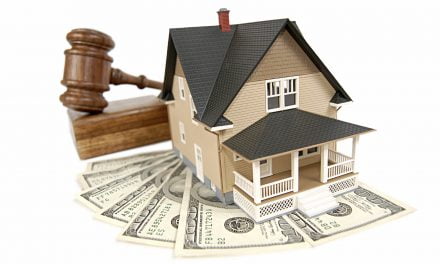Why do we pay taxes, and what has gone wrong with our system? The first in a two-part article series on taxation and real estate.
For more on how the tax system affects real estate, see Part II of the series, see Don’t be a sheep: Take action on income inequality and support your community.
“I pay more taxes, but I end up with more money”
The U.S. has a progressive tax system, meaning the bigger your paycheck, the more taxes you pay. The amount of taxes paid is based on tax brackets assigned to graduated levels of taxable ordinary income.
As an individual’s annual earnings increase, he is shifted into a higher tax bracket, and thus pays more taxes. However, earnings derived from ordinary income (e.g., paychecks for goods produced and services provided, rents, interest) is not the only source of an individual’s taxable income.
One of the biggest moneymakers for asset owners is gains, or profits received based purely on the sale of assets other than inventory. Gains are the result of a price increase on a sale beyond the price paid to acquire a property due to inflation, appreciation and/or asset management.
Individuals who do not receive wages, but hold income-producing assets such as rentals, securities and savings, take the flow of annual income from these investments(with the exception of dividends)as ordinary income.
Individuals whose income is derived mainly from assets, including rents, securities, and interest, rather than employment, are members of the unproductive rentier class.
The aim of the U.S.’s progressive tax system is to constantly shift wealth by funneling money concentrated in the hands of the rentier class and very, very high income earners and spreading it around to fund the framework of society, i.e., law enforcement, the judicial system, health/disease prevention, infrastructure, firemen, the military, social safety net provisions, etc. These shiftings of wealth – transfers – are necessary to maintain a stable economy and society in a democracy.
“I pay taxes, and now I have less”
The opposite of a progressive tax system is a regressive tax system, which essentially maintains a stagnant “flow” of wealth, as wealthy earners pay few taxes, leaving the burden to low-income earners to pay for the societal structure. And, like standing water, these sovereign economies relying on a regressive tax system are full of sickness. Without fail, these systems foster increasing income inequality between the richest and everyone else.
Examples come from developing nations, which often rely on indirect taxation, a method which taxes consumable goods — like food and merchandise— and services. The reliance on indirect taxation in regressive tax systems leads to members of the lower income class paying a greater percent of their income to the government than the wealthy, since everyone pays the same amount of tax on commodities, regardless of income.
Proponents of regressive tax systems argue that if the wealthiest taxpayers are allowed to keep more of the money they earn, their money will be spent by them, and trickle down to positively affect everyone else. The so-called trickledown theory assumes the spending of the rich creates income for other persons, who in turn spend and create income for still others, and so on. Well, the trickledown theory didn’t create wealth for the masses in the days of King Cotton, and it still doesn’t today. The rich get richer through accumulating investments and the poor remain in poverty.
The government has to do the work of manually redistributing wealth earned within its society, as these transfers do not happen on their own. However, our federal government hasn’t been doing their job lately on this front, and it shows.
Case in point: the past fifty years have seen a steady decrease in income tax limits for the wealthy. Following World War II, the limit for the top tax bracket was 94%. Yes, 94%. The government had just clawed the nation out of the Great Depression by spending to create jobs — lots of jobs. The 94% limit was set high to reduce the resultant high national debt(and interest rates were near zero).
By 1982 it was 50% (and interest rates had just peaked at 18%). Today the highest income tax bracket is 35%, with interest rates at effectively zero – an inverse of the high-tax, low-rate scenario which helped us out of the Great Depression.
Editor’s note — Beginning January 1, 2013, the health care law imposes an additional 0.9% tax rate on earned income exceeding $200,000 for individuals and $250,000 for couples filing jointly. This is in addition to the 3.8% tax on taxable capital gains, which are “unearned” profits exceeding $200,000 for single-filers and $250,000 for joint-filers.
Similarly, capital gains tax on the taxable profit produced by the sale of an asset is currently the lowest it has ever been at 15%,set to return to 20% next year, plus the 3.8% additional on taxable capital gains for high-income individuals with the adoption of the healthcare law beginning on January 1, 2013. These low rates do little to provide funds to keep our society attached to one another, much less provide the revenue governments need just to keep roads and bridges and dams in the condition users naturally expect, as they do brilliantly in the Netherlands (a wealthy country with a top tax bracket rate of 50%).
Related article:
Does the healthcare law really affect sellers of real estate?
As the tax bracket limit has decreased, the average standard of living and household wealth in the U.S has also dropped since 1982, driven down by the masses earning less than they did the year before (after inflation), leaving them with less purchasing power and a lower standard of living. The Federal Reserve (the Fed) recently reported that U.S. family net worth dropped from $126,400 in 2007 to $77,300 in 2010 (back to 1990 levels) – 75% of this drop can be accounted for by the housing bust; the rest by a decline in the value of their pay and social benefits (those transfers).
Related article:
Family savings rates don’t match beefed-up down payment requirements















This article hit the nail on the head.
Unfortunately, as the story continues, the growing gap of income inequality between the rich and the poor will inevitably lead to revolution and the collapse of our society.
This socioeconomic pattern has been seen repeatedly throughout history.